Arman Azad
Senior, Flint Hill School, Oakton, Virginia
Spring 2016
“NoMa,” among D.C.’s newest established neighborhoods, was not supposed to exist. A syllabic abbreviation for “North of Massachusetts,” the 35-block area is bounded by Massachusetts Avenue from the south and R Street to the North, stretching from New Jersey Avenue from the west to 2nd Street on the east.
The region is largely centered around its connection to the metrorail system, but when the red line opened in 1976, there was no such thing as the NoMa-Gallaudet U Station and no plans to create it. It was not until 2004 that the Washington Metropolitan Area Transit Authority (WMATA) announced the station’s opening at a final price tag of $103.7 million—$25 million of which came as contributions from private developers, according to the organization.
The landowners investment has proven profitable over the years, with NoMa’s population booming from under 1,000 residents in 2008 to nearly 7,000 in 2015, according to NoMa Business Improvement District (NoMa BID). At the station’s 2004 opening ceremony, former Washington, D.C. mayor Anthony Williams said that “the opening of [NoMa] will expand economic development and prosperity to this part of Northeast Washington,” and twelve years later, his words still resound as the noise from cranes and jackhammers pierce the air in NoMa.
The assessed valuation of the area skyrocketed after the station was built, increased from $535 million in 2001 to $2.3 billion in 2007, and the area now brings the city over $60 million in tax revenue every year.
Yet beneath the statistics, figures, and public ceremonies lies a less perfect picture of NoMa’s aftermath. For residents like 62-year-old Jerome Walter, who lived east of the new station for the past fifteen years before moving with his family in 2013, “the rent just kept going up and up until my family couldn’t afford it anymore. Now we live by the Benning Road metro station. We have a nice house, but it isn’t the home I always knew.”
Walter’s story is far from unique, and this photo essay hopes to capture the essence of a neighborhood revitalized by—or, to some, destroyed—by NoMa. It is a “neighborhood in transition,” yet the question faced by residents past and future is whether that transition is for better or for worse.
***
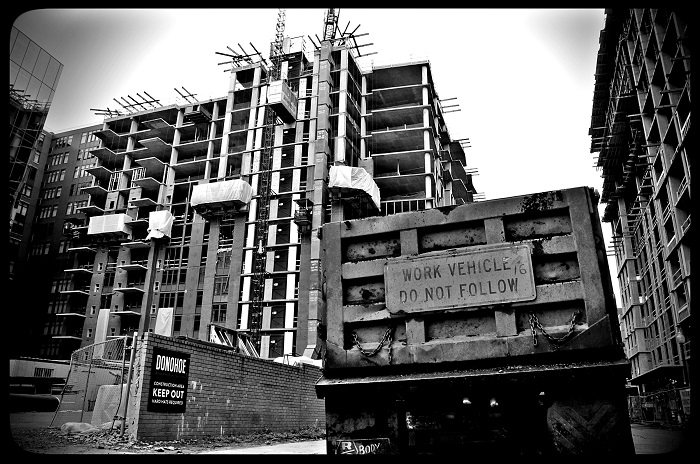
Despite the fact that thousands of residents have already moved into the neighborhood, NoMa continues to build. According to the NoMa BID, the area’s population, currently at 6,000, could eventually grow to 17,500 residents when all planned construction is complete. Scenes like that in the image above, a project of the Donohoe construction company, aren’t exceptions in the neighborhood, but the norm.
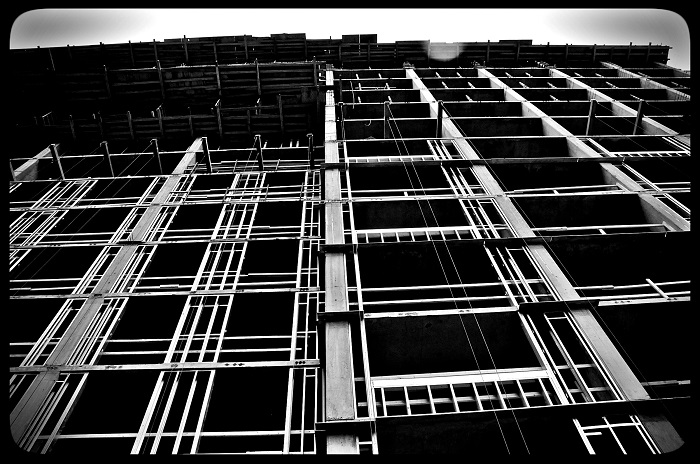 West of the NoMa-Gallaudet U Metro station, one is hard pressed to find the rowhouses that once defined the region’s cityscape. Instead, façades like that above line NoMa’s streets. For 32-year-old resident Leyla Nichols, who works in consulting downtown, “the amenities in the buildings are unbeatable for the price. It’s hard not to want to move here.” While those living in row houses are often content with central air conditioning or a large backyard, those in NoMa enjoy access to over 50 free public events planned by the NoMa business improvement district, free neighborhood-wide public wifi, and new parks, such as the upcoming Third and L Community Park.
West of the NoMa-Gallaudet U Metro station, one is hard pressed to find the rowhouses that once defined the region’s cityscape. Instead, façades like that above line NoMa’s streets. For 32-year-old resident Leyla Nichols, who works in consulting downtown, “the amenities in the buildings are unbeatable for the price. It’s hard not to want to move here.” While those living in row houses are often content with central air conditioning or a large backyard, those in NoMa enjoy access to over 50 free public events planned by the NoMa business improvement district, free neighborhood-wide public wifi, and new parks, such as the upcoming Third and L Community Park.
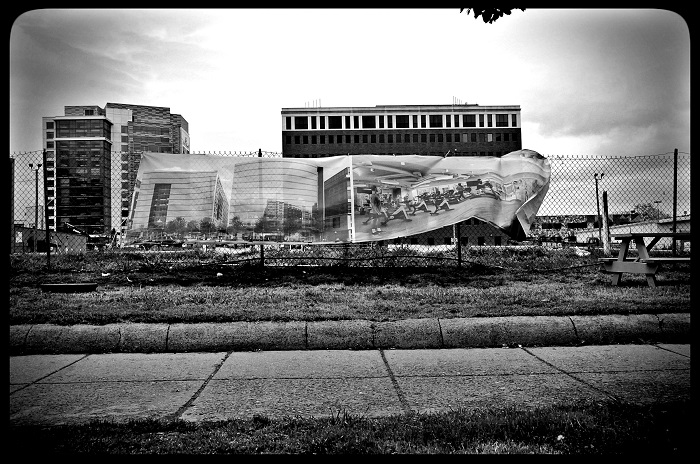 Billowing in the wind is a banner for a planned building of condos and apartment; developers haven’t yet broken ground, but the new building wouldn’t find difficulty blending in with its fifteen-story neighbors. “It almost feels like there’s less light here than there once was,” said 35-year-old Ramsey Simons, who has lived in the area with her mother for the past ten years.
Billowing in the wind is a banner for a planned building of condos and apartment; developers haven’t yet broken ground, but the new building wouldn’t find difficulty blending in with its fifteen-story neighbors. “It almost feels like there’s less light here than there once was,” said 35-year-old Ramsey Simons, who has lived in the area with her mother for the past ten years.
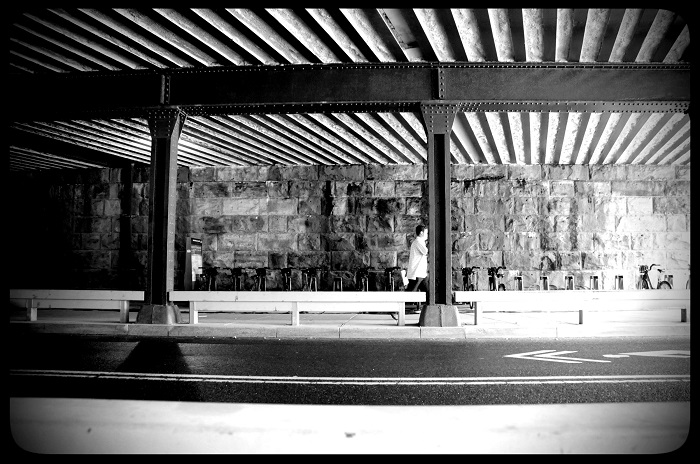 When crossing under the bridge on which the NoMa-Gallaudet U Metro station is built, a homeless encampment and Capital Bikeshare share residence. Soon, the M Street underpass will also be home to a NoMa Underpass Art Park featuring bright and metallic modern artwork. A homeless person, who cared not to provide his name, shares, “I’ve always been homeless. Now they just got nicer streets to be homeless on.”
When crossing under the bridge on which the NoMa-Gallaudet U Metro station is built, a homeless encampment and Capital Bikeshare share residence. Soon, the M Street underpass will also be home to a NoMa Underpass Art Park featuring bright and metallic modern artwork. A homeless person, who cared not to provide his name, shares, “I’ve always been homeless. Now they just got nicer streets to be homeless on.”
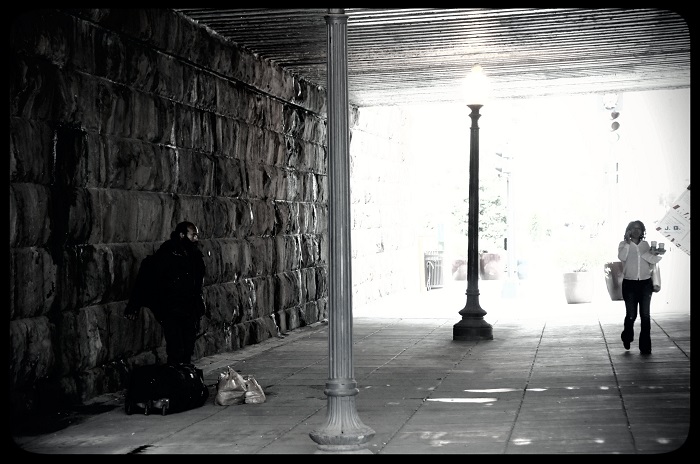 On the left side of the image above is a homeless man that often camps out beneath the NoMa-Gallaudet Metro station, and on the right is a woman carrying two Starbucks drinks while talking on her cell phone. The dichotomy exemplifies the position in which NoMa finds itself—trapped between its relatively-poor past and its rapidly-approaching future.
On the left side of the image above is a homeless man that often camps out beneath the NoMa-Gallaudet Metro station, and on the right is a woman carrying two Starbucks drinks while talking on her cell phone. The dichotomy exemplifies the position in which NoMa finds itself—trapped between its relatively-poor past and its rapidly-approaching future.
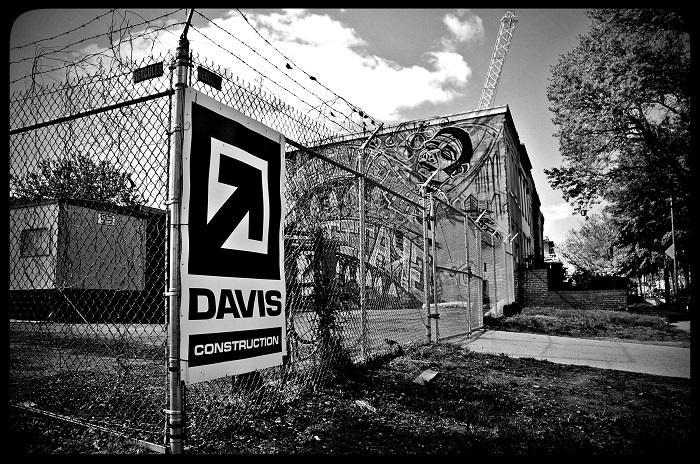
A mural on the block’s final rowhouses is a reminder of the culture that once permeated the region, now replaced by large corporate chains like Starbucks and Harris Teeter. “You could always walk down the street and hear music playing,” said Walter. Today, the sound of dump trucks and demolition has replaced the neighborhood’s once-characteristic cadence.
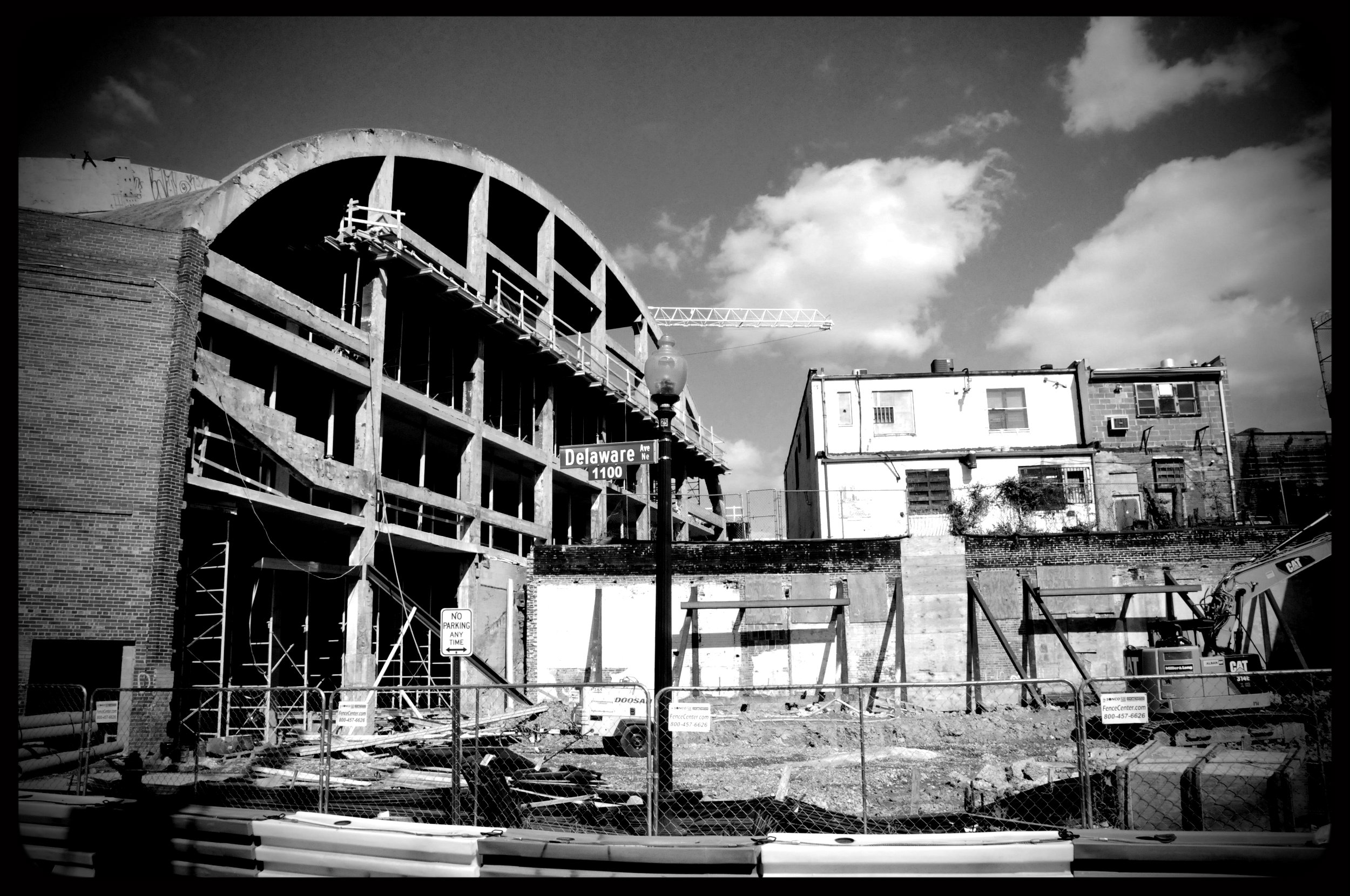
On February 11, 1964, The Beatles performed their first concert in the United States at the Washington Coliseum. Today, the Douglas Development Corporation is demolishing the interior of that space to create the 244,000 square foot Uline Arena, which the company describes as “an exciting office/retail re-development in the burgeoning NoMa neighborhood of Washington, D.C.”
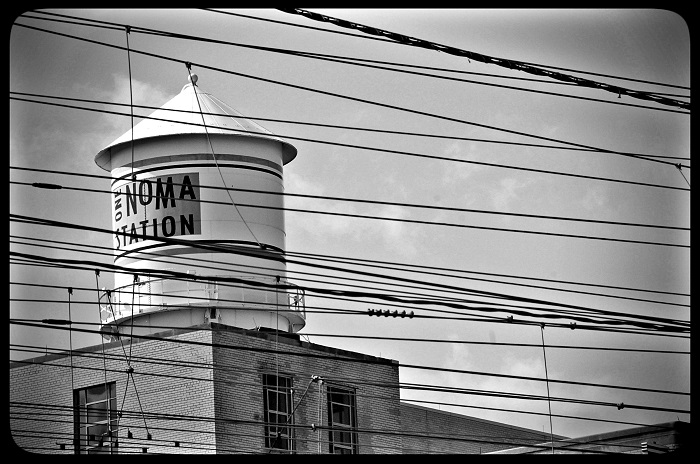
Rising above the Amtrak/Metro corridor, the One NoMa Station water tower is the closest thing to a cultural landmark that the area can claim. David Brown, a 27-year-old originally from San Francisco, takes the red line home from downtown D.C. every day. “I never really notice it,” he said. “I guess it’s nice. Do you think it actually holds water?”

